A New Podcast Opens Portals Into Queer History
“Unboxing Queer History” straddles space and time to explore LGBTQ narratives—from lesbian smelt fishing to gay liberation.
Isabel Carter
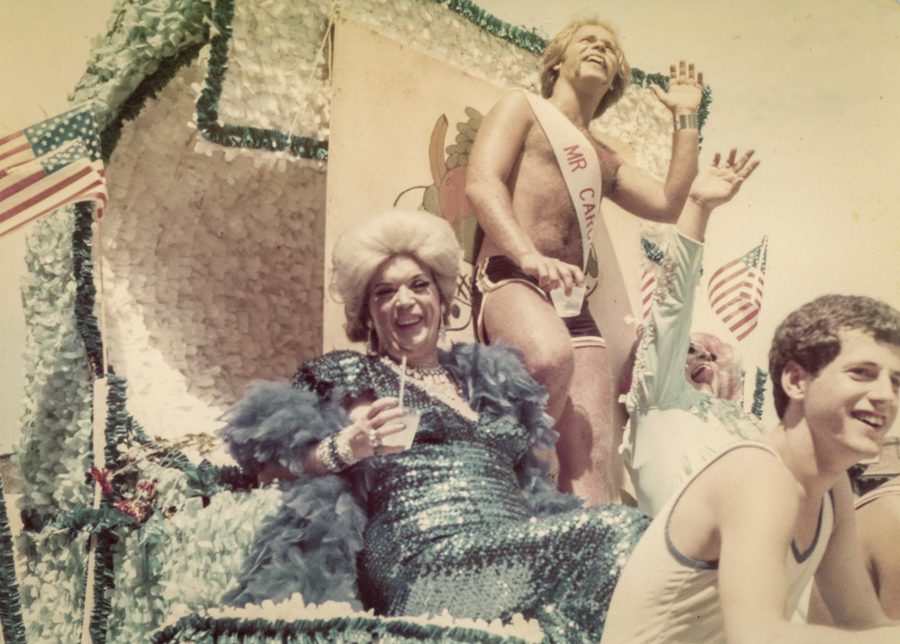
When audio producer Ariel Mejia bikes around Chicago, something strange happens to her. “All of a sudden…I don’t know where I am,” she says. In these moments, Mejia isn’t geographically lost; she’s engaging in a version of time travel, what she calls “portal diving,” to visit the past. One of her favorite places to portal dive is at 3321 N. Clark St., the one-time home of People Like Us Bookstore, Chicago’s first gay and lesbian bookstore.
Suddenly, she’s in the year 1988. “I’ll stand in front of the door and I’ll imagine [People Like Us co-founder] Carrie Barnett is actually standing right in front of me,” Mejia says. “I can see the shelves. I can see the T-shirts on the wall. I can see the people coming and going.”
Mejia’s experience is the subject of Episode 4 of Unboxing Queer History, a new podcast from the Gerber/Hart Library and Archives in Chicago. The community archive is dedicated to LGBTQ culture and history in the Midwest. Over 25 minutes, the episode takes listeners back to when Carrie Barnett and Brett Shingledecker opened People Like Us, which also hosted events and became a place for the broader community to learn more about the LGBTQ community. Despite some initial consternation — at the time, the Chicago Tribune wrote, “Naturally, it takes a certain amount of nerve to open such an unconventional business” — the store saw nine years of success and attracted queer literary luminaries from across the country, including Rita Mae Brown, Leslie Feinberg and Alison Bechdel.
People Like Us closed abruptly in 1997 after a change in ownership, but not before it had become known as one of the only places where LGBTQ Chicagoans could find themselves reflected in media — a place to be reminded of the meaning of a dark blue hanky in the left-side pocket, a place to gather, a place to see and be seen.
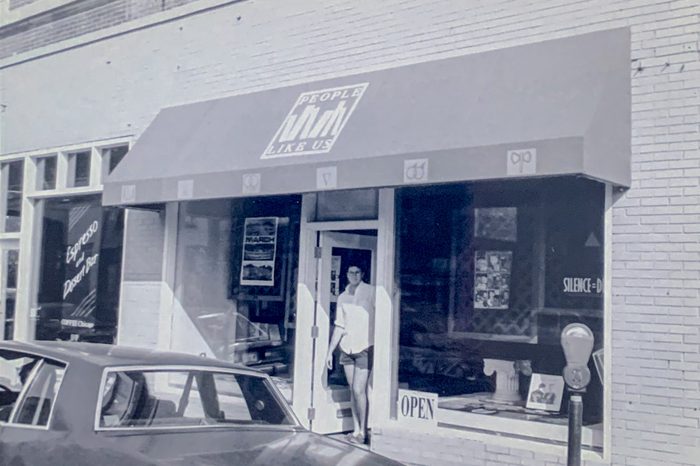
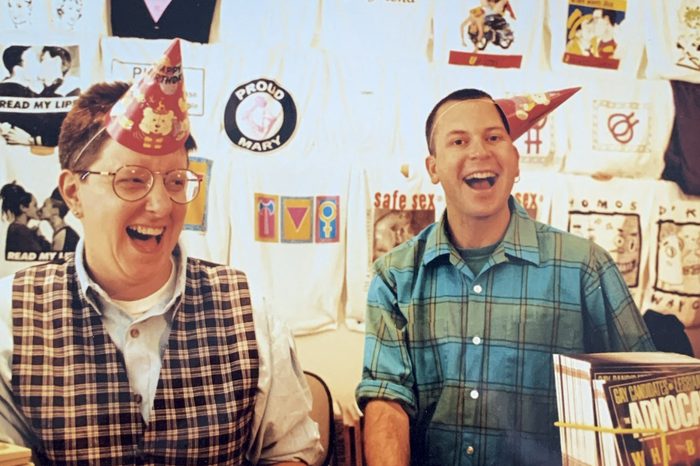
What history gets lost when these community spaces shutter? Unboxing grapples with this question through intimate interviews and humorous anecdotes, highlighting stories of LGBTQ history and culture in the Gerber/Hart collections through eight lovingly researched, richly produced episodes. But portal diving is what’s really on offer here.
Episode 6 (my favorite) centers on the Great Angling Lesbian Society (GALS), a community organization started by two lesbians in Chicago in 1994 (one of whom was Sherry Pethers, who became the first out lesbian elected as a Cook County judge in 2004). With immersive sound design, Unboxing transports listeners to the water for stories about smelt fishing, camping hijinks and the occasional love affair.
And there’s plenty more.
Episode 7 offers an intimate new perspective on gay liberation activist Bill Kelley through a conversation with his long-time partner, Chen Ooi. Episode 5 introduces Lorrainne Sade Baskerville, the Black trans woman who founded transGenesis, the first direct services organization specializing in trans healthcare in Chicago.

Episode 1 takes listeners through Chicago’s midcentury night life with the story of famous drag performer Miss Tillie, aka the “Dirty Old Lady of Chicago.” This is Gerber/Hart programming and social media coordinator Jen Dentel’s favorite episode. She reverently describes the boxes of photographs in the Miss Tillie collection: “Glamor studio, lots of feather boas, strappy pumps, fish nets. She’s got a long dress where it’s baring one shoulder, very long wig, the big chandelier earrings. And she’s holding her drink and just kind of looking right at the camera.”
Mejia agrees: “I’m so interested in where people partied, what they were wearing, what was happening, because those stories tell a much wider history.”
As the Gerber/Hart team tries to expand the narrative around queer history with Unboxing, they say they’ve already felt the power of that in their own lives. “Learning more about my lineage, I experienced the broad beauty of possibility and entry points and connection to myself in the world,” Mejia says. This self-reflexivity is just one of the triumphs of the show — one the show’s creators hope will have lasting impact.
I have to say, I felt that power too. Listening for the first time, especially after two long, pandemic years, a warmth — a feeling of connection to queerness across space and time — bloomed across my skin like the first sun in February. I hadn’t even known I was missing it.
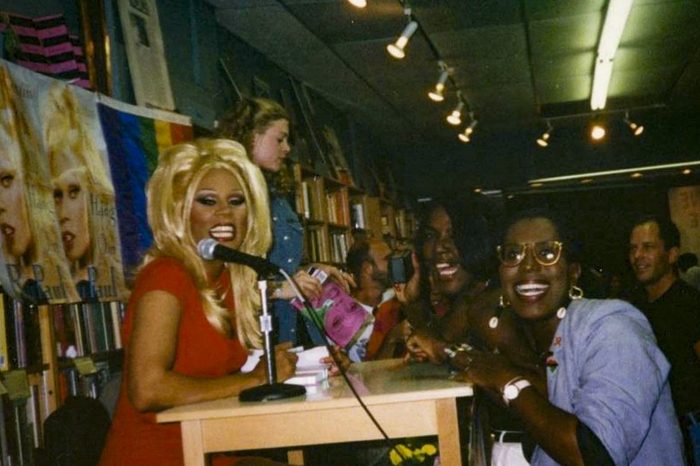

I spoke with Mejia and Dentel, the co-creators of Unboxing, in March.
Without the Gerber/Hart archive, the stories in Unboxing Queer History would not exist. Tell us more about the erasure of queer history and Gerber/Hart’s work.
ARIEL MEJIA: So there’s the mainstream narrative: We know about Stonewall, we know about the height of the AIDS epidemic, we know about marriage equality. Our country has shaped queer representation around that, but queer history is not all grandiose. It’s also about the minutiae.
The archive has hundreds of photos of people doing drag in their houses, hanging out with their friends. These pictures are so informative. We can read and watch movies about Stonewall all we want — but that is not the center of our history. It is our daily lives. Archives illustrate that.
Each episode is an exploration into a particular collection in the archive, an intentional look into these queer histories.
Episode 5 opens with a critique of the archive’s limitations, about gatekeeping in archival work. How does that dynamic affect the stories that get told?
JEN DENTEL: The people that set up Gerber/Hart happened to know certain people, who knew other people, and it’s people that all look the same: white cis gay men. So this pattern repeats, and it leads to this impression that’s the only queer history that existed — which is incorrect. It makes me wonder how much of this history got thrown out.
We need to work really hard to make our collections more representative. Otherwise, if people see that almost every collection is white, why would they trust Gerber/Hart enough to want to donate their stuff there? Part of the hope with this project was that we could reach more people that hadn’t heard of Gerber/Hart, and people would realize their stuff is important — and hopefully donate, so we can have a more representative collection.
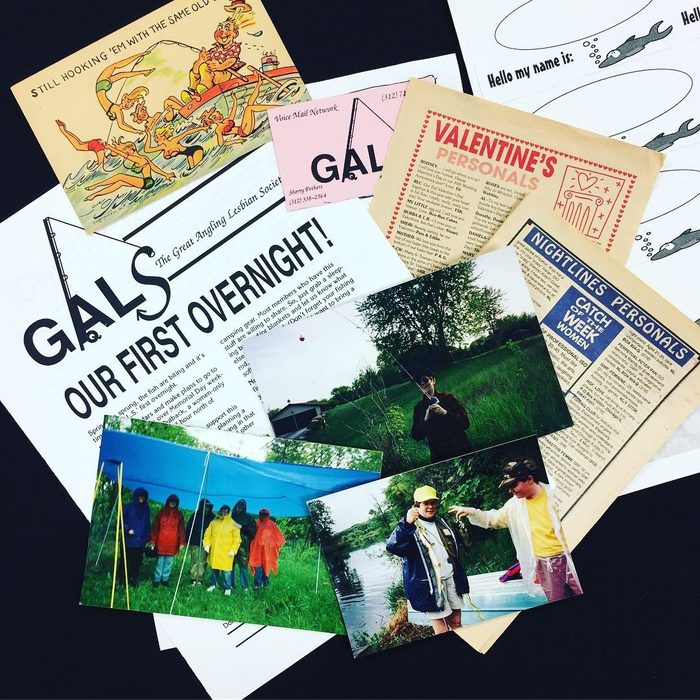
Now tell us what makes Gerber/Hart so special.
JD: Every single piece of material is LGBTQ focused. We have a circulating library with a reading room. There’s books, DVDs, VHS tapes, music. There’s a special collections room which has all of our periodicals — so it’s got a ton of newspapers, newsletters and posters. We focus on Midwest and Chicago history, but there are some national publications, like stuff from early homophile activism groups and all of our erotica, muscle magazines, stuff like that. Just awesome. Most of the Unboxing episodes are about the personal collections in the archives.
AM: Someone can listen to Episode 1, “The Dirty Old Lady: Chicago Drag History and the Mystery of Miss Tillie,” and they can come in, and they can go look at those pictures of Miss Tillie. That’s what’s so exciting about this archive. You
don’t need to go through a daunting process to access the archives. Gerber/Hart is very accessible, anyone can show up.
A lot of queer history we learn about focuses on oppression, homophobia, transphobia. But Unboxing showcases a positive queer lineage. Was this intentional?
AM: The archive boxes spoke for themselves — in how rich and beautiful the lives people were leading were. When you’re really looking, the joy comes through, because it’s the truth.
Thinking about the Amigas Latinas archive, for example — Amigas Latinas was a queer and Latina group that was born out of a need for a space that was particular to this intersection of their identities. They would get together, eat, have outings and softball teams and picnics. Latino organizing in Chicago became about supporting undocumented residents, fighting anti-immigration legislation, so they had a self-awareness around what the needs of the
community were. I think that’s part of what showing a full picture, beyond misery and marginalization, shows us. Chicago’s history often gets overlooked by the coasts. Because we’re in the middle of the country, we’re at an incredible crossroads for activism, and I want to be a part of bringing that history into a national consciousness.
JD: The Midwest has a lot of firsts. The first gay rights organization was in Chicago with Henry Gerber. There’s Kinsey in Indiana. I knew almost nothing about queer history when I started at Gerber about eight years ago. Seeing pictures of Miss Tillie doing drag in the 1940s blew me away. Of course
drag has existed a lot longer, but seeing the pictures of it happening back then really made an impact on me. It’s beautiful, being able to see people just hanging out and having fun together. That’s where you start to see yourself as a part of a queer lineage. Those everyday moments are so important.
How do the archives relate to time traveling, or what you call “portal diving”?
AM: Being in Chicago and learning about particular spaces — be them bookstores, be them bars, be them even where people would meet to plan events — history informs us. But these are the actual stories behind what informs where we are and why we do this work. That’s the beauty of working on this project. In the pandemic, I used archives to explore the past and make my world much bigger than the apartment I was trapped inside. I thought a lot about how we create portals in our lives to experience expansiveness. And all of a sudden, I was walking down the streets in 1988.
What did the Unboxing research process look like?
AM: Some of the episodes were more extensive, like Episode 7, “Bill Kelley: A Lifetime of Chicago Activism.” Bill Kelley was an activist, a lawyer and a packrat. He is the cornerstone collection, and his episode was intimidating because he was involved in so much that it was hard to pick what to cover. But being able to hear from his partner, Chen Ooi, about how they met looking across the bar at each other — I’d never heard that story. So having that kind of personal connection was really wonderful.
JD: For Episode 5, about Lorrainne Sade Baskerville, we were able to find Lorrainne in Thailand with just a Facebook message. We already had Lorrainne’s collection but it had been a while since she left Chicago. Being able to interview her was so important for the background. Lorrainne’s collection is fantastic, and it’s the only one at Gerber/Hart that is explicitly Black and trans. It’s kind of an anomaly in the archive, and that’s a problem.
Archives don’t tend to be places with a lot of audio to build really immersive worlds, but Unboxing is very lively. How did you approach the sound design?
AM: I was interested in storytelling as an art form and a journalistic tool. Each episode takes a different shape and form. Some of them were first person narrative, some of them were super produced. The spirit of oral history is about the experience. What does it feel like to enter a space? In Episode 4, “People Like Us: So Much More Than a Bookstore,” when Carrie Barnett says she pulled up onto the curb and opened her trunk, you can hear the squeaking of a trunk open. I really like thinking about the way sound nurtures the entire world we’re immersing in. What do you want listeners to take away from Unboxing?
What do you want listeners to take away from Unboxing?
JD: I want people to recognize how rich Chicago’s queer history is, knowing that there is this lineage of queer elders and queer past that you can look back on. I want people to realize that the work they’re doing and the life that they’re living is important. Be a packrat. You never know what someone might be interested in, in the future.
AM: I want listeners to be inspired to keep their things and understand the way they document their own lives is really important. I want people to feel inspired to create their own personal archives, to engage in queer history in a way that goes beyond what we’re presented. We are part of an important lineage. It lives inside us and extends into the future. I hope that, by being connected to their lineage, people feel more deeply connected to themselves. I really am in love with queer history. Our stories are the most powerful tool for transformative change, and so, in my own experience of learning more about my queer lineage, I experienced beautiful entry points and connections to myself in the world.
This interview has been edited and condensed. The podcast Unboxing Queer History is available at GerberHart.org/unboxing-queer-history and all podcast listening platforms.





